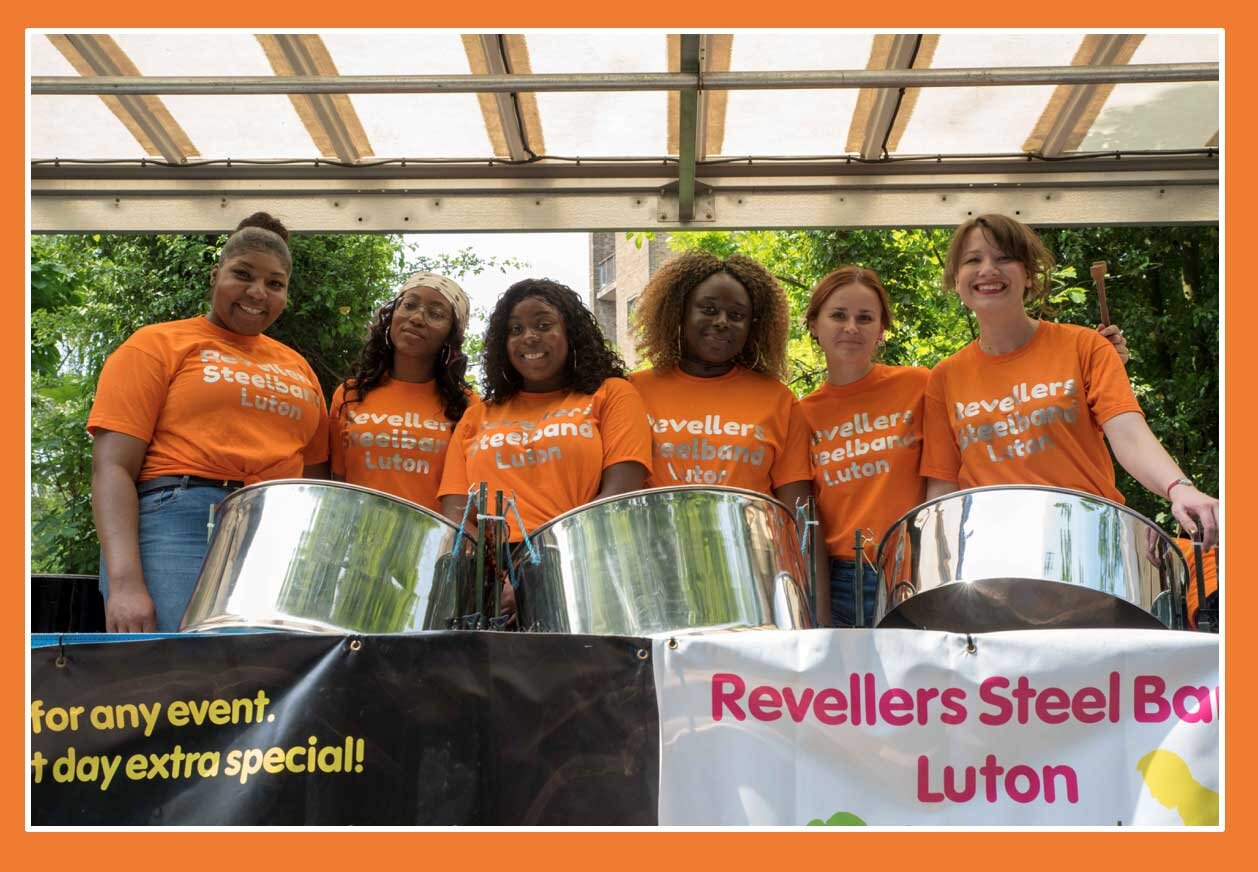Black History Month: History of Steel Pan
Revellers steel band at Luton Carnival
Steel pan history can be traced back to the enslaved Africans who would use drumming as a form of communication , and found creative ways to make music in spite of the oppression they faced.
Trinidad was a British colonial island in the late 19th Century. In 1877 the British government tried to enforce further oppression to the freedom of the black community by banning the playing of drums in celebration or in a festival - all in an attempt to supress carnival.
Their attempts didn't work. Instead the people invented an instrument made of bamboo called Tamboo Bamboo. These instruments were tuned to different sounds by their length. Find out more about tamboo bamboo bands here.
This method of making rhythm and music evolved to use metal objects to make similar sounds - anything from junk metal to household items. Different sized and shaped objects would produce different pitches and sounds which all together a band could create tonal music with.
In turn these instruments evolved into the steel pans that we recognise today - a single pan with different pitches based on different raised levels within the pan. The steel pan has become a symbol of the Caribbean. It is the only musical instrument invented in the 20th century.
In the 1940s steel pans started being created using 55-gallon oil drums, and are now the national musical instrument of Trinidad & Tobago.
Some of the early pionneers who helped invent the steel drum as we know it today include: Winston ‘Spree’ Simon, Sterling Betancourt, Philmore ‘Boots’ Davidson, Belgrave Bonaparte, Andrew ‘Pan’ De Labastide, Theo Stephens, Anthony Williams, Dudley Smith, Ormand ‘Patsy’ Haynes, and Granville Sealey.
In Luton we have a brilliant steel pan band called Revellers. They always take part in the Luton Carnival, as well as playing at other events. If you would like to find out more about them, or even learn how to play steel pan, click here.
To celebrate the history of steel pan we have created a steel pan headdress you can make from paper. Click here for the full instructions.
Find out more about the history of steel drums in Trinidad & Tobago in the video below by SageLandMedia

